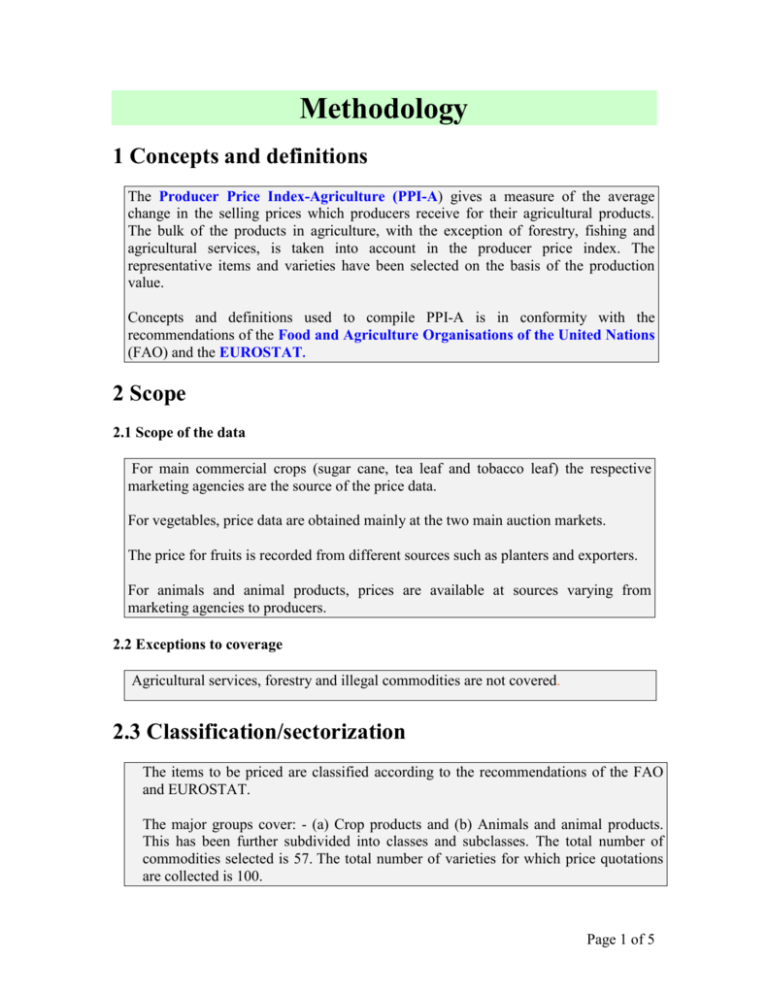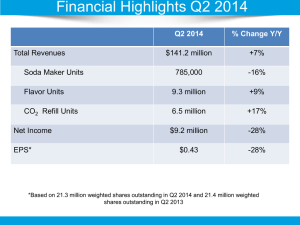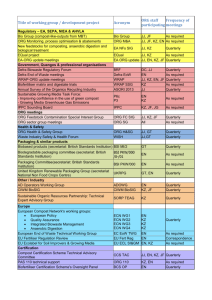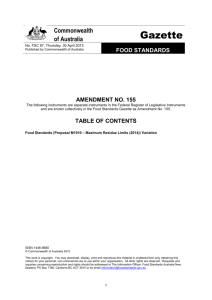Producer Price Index - Agriculture
advertisement

Methodology 1 Concepts and definitions The Producer Price Index-Agriculture (PPI-A) gives a measure of the average change in the selling prices which producers receive for their agricultural products. The bulk of the products in agriculture, with the exception of forestry, fishing and agricultural services, is taken into account in the producer price index. The representative items and varieties have been selected on the basis of the production value. Concepts and definitions used to compile PPI-A is in conformity with the recommendations of the Food and Agriculture Organisations of the United Nations (FAO) and the EUROSTAT. 2 Scope 2.1 Scope of the data For main commercial crops (sugar cane, tea leaf and tobacco leaf) the respective marketing agencies are the source of the price data. For vegetables, price data are obtained mainly at the two main auction markets. The price for fruits is recorded from different sources such as planters and exporters. For animals and animal products, prices are available at sources varying from marketing agencies to producers. 2.2 Exceptions to coverage Agricultural services, forestry and illegal commodities are not covered. 2.3 Classification/sectorization The items to be priced are classified according to the recommendations of the FAO and EUROSTAT. The major groups cover: - (a) Crop products and (b) Animals and animal products. This has been further subdivided into classes and subclasses. The total number of commodities selected is 57. The total number of varieties for which price quotations are collected is 100. Page 1 of 5 4 Basis for recording 4.1 Valuation Since the value of market production is not available, the total production is considered as a proxy in calculations of weights. The weights are derived by multiplying the average of production for 3 years by the average of unit prices of the reference period which is the mid year. In principle, prices collected should refer to farm-gate prices, but it is extremely difficult to obtain such prices for vegetables. Hence, in lieu of farm-gate price, the wholesale price of the produce is recorded at the two main auction markets once a week. 4.2 Recording basis The collection of prices of vegetables is carried once weekly whereas prices for some other items are recorded monthly. Final prices for sugar and tobacco are obtained after one year. The prices are updated every quarter based on the provisional prices obtained and are subsequently revised when the final prices are obtained. Final price for tea is available after two years. The prices are updated every quarter based on the provisional prices obtained and are subsequently revised when the final prices are obtained. 5. Accuracy and reliability 5.1 Source data collection programs The composition of the PPI-A basket used for computing the PPI-A as from 2007 has been derived from data obtained from the average of production during 2006, 2007, and 2008. 2007 is the reference period. The weights are kept fixed and updated every five years. The representative items and varieties were selected on the basis of production; their total number is 100. The items to be priced are classified in the following ways: (a) Crop products and (b) Animals and animal products. This has been further subdivided into classes and subclasses. The total number of commodities selected is 57. The total number of varieties for which price quotations are collected is 100. Page 2 of 5 For main commercial crops (sugar cane, tea leaf and tobacco leaf) the respective marketing agencies are the source of the price data. For vegetables, price data are obtained mainly at the two main auction markets. The price for fruits is recorded from different sources such as planters and exporters. For animals and animal products, prices are available at sources varying from marketing agencies to producers. 5.2 Source data definitions, scope, classifications, valuation, and time of recording Frequencies of price collection vary weekly for some commodities to only once a year in others. Prices are collected through personal visits except for the commercial crops. For vegetables, price data are collected once a week at the two auction markets. For commodities for which prices are fairly stable, data suppliers are visited on a quarterly basis but prices are collected for each month of the quarter For the main commercial crops (sugar cane, tea leaf and tobacco leaf) the reported prices are normally fixed for the crop year by the respective marketing agencies. 5.3 Source data timeliness The quarterly PPI-A is released within eight to nine weeks after the end of the reference period. 5.4 Source data assessment Collected prices are validated after proper editing. Regular supervision of price collectors is organized to ensure good data quality. Major discrepancies in data collected are subject to more control from the Senior Statistical Officer/Statistician. Page 3 of 5 6 Statistical techniques 6.1 Source data statistical techniques The accuracy of the prices collected is verified at national level. Producer prices are cross checked with the Consumer Price Index. Whenever a product is temporarily not available in an outlet, the missing price is imputed on the basis of the previous prevailing price. For seasonal commodities (vegetables and fruits), a variable weight is used whereas for Animals and animal products a fixed weight is used. 6.2 Other statistical procedures The lowest level indices are aggregated according to a modified Laspeyres formula. 7 Data validation 7.1 Validation of intermediate results The sub indices published make it possible to assess the reasonableness of the data. Cross checks are possible with items of the consumer price index (CPI). 7.2 Assessment of intermediate data Unusual movements in the index are investigated regularly. 8 Revision studies 8.1 Revision studies and analyses For vegetables and Animals and animal products the indices are final. Final prices for sugar and tobacco are obtained after one year. The prices are updated every quarter based on the provisional prices obtained and the indices are revised when the final prices are obtained. Final price for tea is available after two years. The prices are updated every quarter based on the provisional prices obtained. Hence the index is revised after the final price is available Page 4 of 5 9 Data 9.1 Statistical presentation The PPI-A is compiled on a monthly, quarterly and yearly basis. The PPI-A includes monthly, quarterly and yearly data and is released within eight to nine weeks after the end of the reference period. Time series of PPI-A data are published in quarterly Economic and Social Indicators (ESI) and also appear in the Digest of Agricultural Statistics. The ESI on PPI-A, tabulations and a write-up are given. A brief analysis of monthly, quarterly and yearly change is given. 9.2 Dissemination media and format The Economic and Social Indicators on PPI-A is released quarterly on the CSO website:- http://statsmauritius.gov.mu It is also released through quarterly publications both on the website as well as in printed versions. Page 5 of 5











